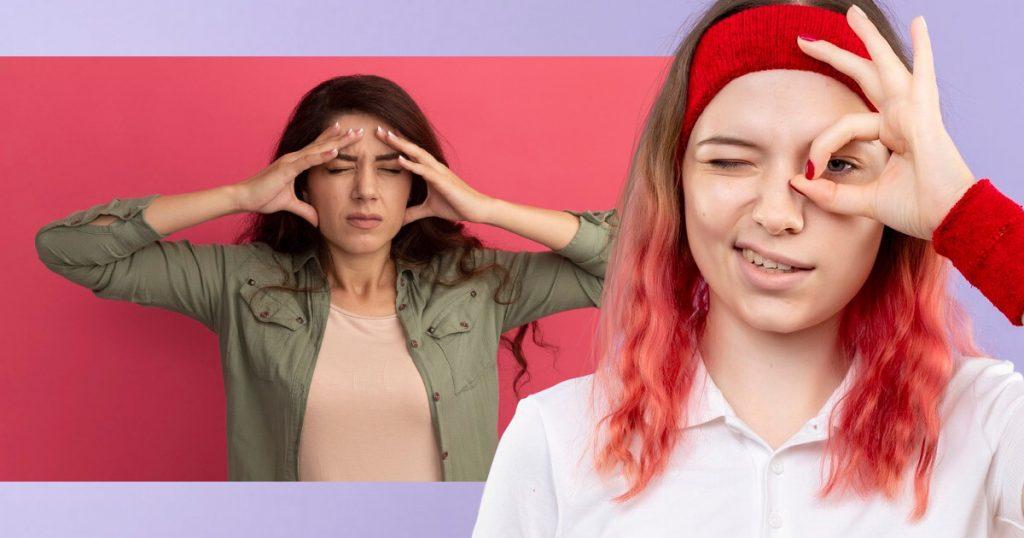People often say “the eyes are the window to the soul,” meaning our eyes can show what’s happening inside us, including our health. The eyes are not just for seeing; they play a big role in keeping us healthy. When our eyes are not healthy, it might mean there’s a bigger problem with our body. For example, the World Health Organization reports that around 2.2 billion people have trouble with their vision, which shows how important eye health is for everyone. Besides just seeing, our eyes can give clues about other health issues, like iron deficiency. This is why paying attention to our eyes is important—they might be telling us something about our overall health.
What is Iron Deficiency?
Iron deficiency means your body doesn’t have enough iron to make hemoglobin, which is important for carrying oxygen in your blood. Without enough iron, you can develop iron deficiency anemia, making you feel tired and weak. This condition can also affect your immune system, slow down children’s growth, and cause problems during pregnancy.
Causes of Iron Deficiency Anemia
- Eating too little iron-rich food.
- From heavy periods or internal bleeding.
- Conditions like celiac or Crohn’s disease can make it hard to absorb iron.
- Pregnant women and kids need more iron.
Symptoms of Iron Deficiency
Some signs of iron deficiency include:
- Feeling very tired and weak
- Dizziness or feeling lightheaded
- Pale or yellowish skin
- Brittle nails
- Cracks at the corners of the mouth
- A swollen or sore tongue
You might also notice signs by looking at the eyes:
- Pale inner eyelids
- Dark circles under the eyes
- Blurry vision or trouble focusing
Spotting these signs, especially in the eyes, can help identify iron deficiency early and get the necessary medical help.
The Eye-Iron Connection: Signs of Anemia in Your Eyes
Iron deficiency anemia can change the way your eyes look and feel. Anemic eyes often appear paler, especially the inner eyelids, because there’s less hemoglobin. This paleness contrasts with the healthy pink-red color of normal eyes. You might also notice dark circles or a sunken look around the eyes, and they might seem dull and tired.
Compared to normal eyes, which look bright and lively, anemic eyes can appear tired and weak. The eyelids of someone with anemia usually look lighter than the rosy hue of healthy eyelids, showing less blood flow.
When there’s not enough blood and iron, it can cause blurry vision and trouble focusing, as less oxygen reaches the eyes. This makes it hard to see clearly and can strain your eyes. Spotting these changes early can encourage seeking medical advice for proper treatment.
What to Do When You Notice Eye Symptoms from Low Iron
If you see signs like pale eyes, dark circles, or blurry vision that may hint at iron deficiency anemia, here are some simple steps to help manage it:
1. Improve Your Diet
Eat more foods that are high in iron. Good options include lean meats, liver, shellfish, beans, lentils, tofu, and iron-fortified cereals. To help your body absorb iron better, add vitamin C-rich foods like oranges and tomatoes to your meals.
2. Take Iron Supplements
If changing your diet isn’t enough, you might need iron pills. Talk to a doctor about which type is best for you, such as ferrous sulfate or ferrous gluconate. It’s usually best to take them on an empty stomach, but if they upset your stomach, you can take them with food.
3. Consider Medical Treatments
For more severe cases, your doctor might suggest iron infusions. This involves getting iron directly into your blood through a needle, which works faster than pills. Sometimes, medications to help your body make more red blood cells might also be needed.
4. Monitor Your Health
Keep track of any changes in your symptoms and have regular blood tests to check your iron levels. Regular doctor check-ups will help make sure your treatment is working.
5. Make Lifestyle Changes
Get enough rest and manage stress to help your body heal. Gentle exercise can also boost your energy and improve circulation.
6. Stay in Touch with Your Doctor
Regularly visiting your healthcare provider helps ensure your anemia is under control and can prevent future problems. They might adjust your treatment as you improve.
7. Learn About Your Anemia
Understanding what causes your low iron can help prevent it from happening again. Look into whether things like heavy periods or other health conditions might be affecting your iron levels.
These steps can help you manage iron deficiency anemia and keep your eyes and overall health in check.
Taking Care of Your Eyes for Better Health
Your eyes are more than just a way to see the world—they can give you clues about your overall health, including your iron levels. Looking after your eyes is key to catching health issues like iron deficiency early. Regular visits to the eye doctor help spot problems before they become serious. Eating a nutritious diet packed with leafy greens, fish, and nuts can do wonders for your eye health.
It’s also important to drink plenty of water to keep your eyes hydrated and comfortable. Protect your eyes by wearing sunglasses when you’re outside and taking breaks from screens to reduce strain. Getting enough sleep and staying active are great for both your eyes and your overall wellness. Healthy eyes can provide insights into your overall health, so by adhering to these easy tips, you are taking care of your entire body. Make eye care a regular part of your health routine to ensure you stay in good shape.
